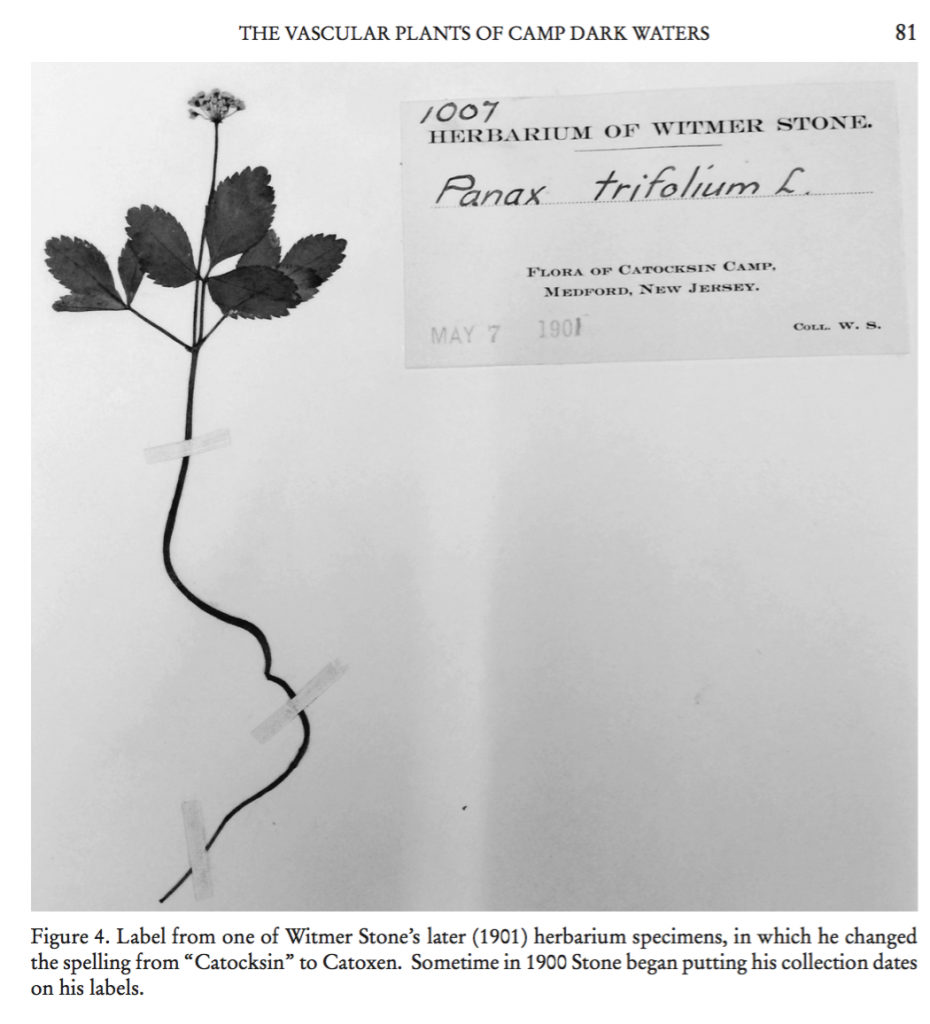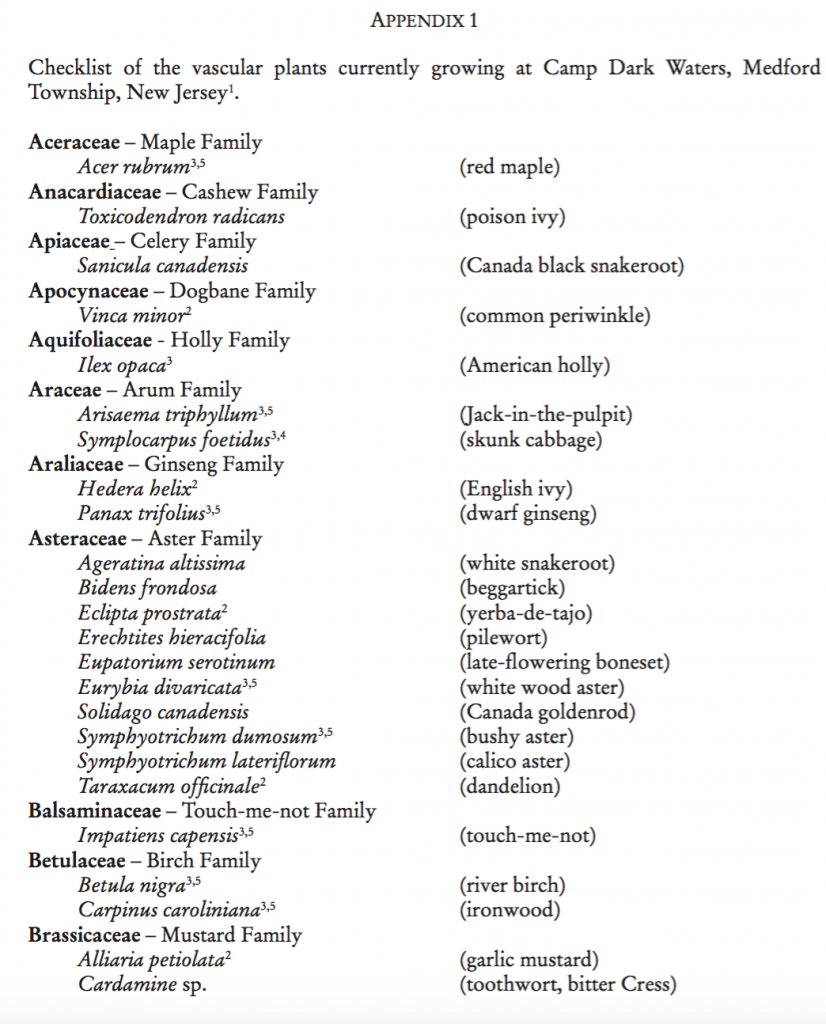Continuing with Witmer Stone’s findings of different specimens of plants between 1899 to 1910 on Camp Dark Waters’ land, John Braxton and Wayne R. Ferren Jr. studied and compared the plants found in 2015 on the same lands to Witmer Stones discoveries in the past. Stone found 327 herbarium specimens of plants during is time collecting and studying on Camp Dark Waters’ land. To start off Braxton and Ferren, examined 72 herbarium specimens that Stone collected in Medford. It appeared that 70 of these species are currently growing at Camp Dark Waters. When Stone collected specimens, he started to label the locations where he found these planets, so 69 out of the 72 specimens were labeled designating either “Flora of

Compared to Stone’s 327 specimens of plants he collected, there are only 141 identified vascular planets found at Camp Dark Waters in 2015. There has been a real decrease in plant life since 1910, which can be studied more closely to understand this decline. It was wondered if the specimen that Stone found labeled “Medford”, were found in another location, not at Camp Dark Waters. By randomly selecting 61 herbarium specimen collected by Stone that is not currently growing at Camp Dark Waters, Braxton and Ferren analyzed these species. Out of the 61, 58 of these specimen or 95 % were collected from the location of “

Now, I know you’re wondering, “Why are there only 141 specimens currently in the vicinity of Camp Dark Waters instead of 261 when Stone studied the land in 1911? Well, there are multiple factors that contribute to this change which includes: ecological succession, the shift in human inhabitants bordering in the camp affects species composition and lastly the heavy use of the land by campers. All of these elements have affected the changes in natural life throughout the years because nothing stays constant. I will dive deeper into the details of each element in the next blog. But for right not, everything in nature is constantly adjusting and adapting to new conditions, but this is the beauty of the natural world. Everything has to keep moving forward, so all species can thrive and survive on this earth.
Fun addition:
In the appendix one of the article The Vascular Plants of Camp Dark Waters, Medford, New Jersey, 1912 to 2015 by John Braxton and Wayne R. Ferren Jr. list all the species that are grown at Camp Dark Waters. This image is only the first page of the list, but there are four more continuous pages of listed species.
